 |
 |
 |
| |
In 70 and Older HIV Group, Frailty Worsens in Some, Improves in Others
|
| |
| |
EACS 2023, October 18-21, 2023, Warsaw
Mark Mascolini
Frailty status worsened over 1 year in 18% of a French HIV group 70 or older, but functional capacity improved in 14% over the same span [1]. This 491-person longitudinal study linked CD4 count below 350 and type 2 diabetes to worsening from prefrailty to frailty in 12 months.
As described by the Fried frailty phenotype [2], frailty is an age-related ever-evolving condition that predicts outcomes like falls, hospital admission, and death. Multiple studies already document a heightened frailty burden in people with HIV infection [3]. Yet as the French SEPTAVIH Study Group observed in detailing this new analysis, little work has specifically addressed the impact of frailty on HIV-positive people 70 and older.
SEPTAVIH investigators aimed to assess the frequency and factors linked to frailty transitions-worsening or improvement-over 12 months in a cohort of 491 people 70 and older. Participants were taking antiretroviral therapy for at least 12 months. They entered the study from May 2019 to March 2020. Health workers assessed frailty according to the Fried frailty phenotype [see 2] when a person entered observation and 12 months later. At each evaluation participants were graded as robust, prefrail, or frail [see 2].
At the baseline measure, researchers rated 119 participants (24%) robust, 324 (66%) prefrail, and 48 (10%) frail. Median age was significantly lower in robust people (72.7) than in prefrail people (73.9) and frail people (76.5) (P < 0.01 for each comparison with robust). Proportion of participants with deprived socioeconomic status indicated by an EPICE score at or above 30.17 was also lower in the robust group (22.7%) than in the prefrail group (34.4%, P = 0.03 vs robust) and the frail group (62.5%, P < 0.01 vs robust). High blood pressure proved significantly more frequent in frail people than robust people (81.2% vs 60.5%, P = 0.01), as did type 2 diabetes prevalence (35.4% vs 19.3%, P = 0.03).
The second frailty assessment at month 12 called 23% of the cohort robust, 65% prefrail, and 12% frail. Among people judged robust at the initial measure, 56% remained robust at month 12, 43% became prefrail, and 1% became frail. Among people initially prefrail, after 12 months 14% improved to robust status, 75% remained prefrail, and 11% worsened to frail. In the group rated frail at the initial measure, 47% improved to prefrail at month 12, and 53% remained frail. All told, 18% of participants moved to a worse frailty status over 12 months, while 14% improved to a healthier status.
Multivariate logistic regression adjusted for gender, baseline age, college education status, and HIV diagnosis before versus after July 1996 picked out factors independently tied to worsening or improving frailty status across 12 months. Three factors independently predicted that prefrail people would worsen to frailty versus remain stable, at the following adjusted odds ratios (aOR) (and 95% confidence intervals). One factor independently lowered chances of prefrailty improving to robustness.
Prefrailty worsening to frailty over 12 months:
- Older age: aOR 1.10 (1.01 to 1.20, P = 0.03)
- Baseline CD4 count below 350: aOR 3.05 (1.14 to 8.18, P = 0.03)
- Type 2 diabetes: aOR 2.63 (1.05 to 6.57, P = 0.04)
Prefrailty improving to robustness over 12 months:
- Male vs female: aOR 0.40 (0.18 to 0.92, P = 0.03)
SEPTAVIH colleagues speculated that low CD4 count may signal premature immune system aging in people with HIV [4]. They noted that their CD4 results echo those from the Multicenter AIDS Cohort Study (MACS), in which low CD4 count strongly predicted frailty in middle-aged men [5]. Turning to the association of diabetes with worsening frailty status, the researchers observed that the metabolic dysfunction and chronic inflammation that attend diabetes can lead to deterioration of muscles and nerves seen with frailty.
References
1. Achour J, Abulizi X, Makinson A, et al. One-year frailty transitions among persons living with HIV aged 70 years or more on ART. EACS 2023, October 18-21, 2023, Warsaw. Abstract eP.B2.137.
2. Fried LP, Tangen CM, Walston J, et al. Frailty in older adults: evidence for a phenotype. J Gerontol A Biol Sci Med Sci. 2001;56:M146-56. doi: 10.1093/gerona/56.3.m146. https://academic.oup.com/biomedgerontology/article/56/3/M146/545770 (The Fried frailty phenotype includes 5 conditions: weight loss, exhaustion, low physical activity, slow gait, and weak grip strength. Having 3 to 5 of these conditions indicates frailty, while 1 or 2 conditions indicate prefrailty.)
3. Piggott DA, Erlandson KM, Yarasheski KE. Frailty in HIV: epidemiology, biology, measurement, interventions, and research needs. Curr HIV/AIDS Rep. 2016;13:340-348. doi: 10.1007/s11904-016-0334-8. https://www.ncbi.nlm.nih.gov/pmc/articles/PMC5131367/
4. Molina-Pinelo S, Vallejo A, Diaz L, et al. Premature immunosenescence in HIV-infected patients on highly active antiretroviral therapy with low-level CD4 T cell repopulation. J Antimicrob Chemother. 2009;64:579-88. doi: 10.1093/jac/dkp248. https://pubmed.ncbi.nlm.nih.gov/19608579/
5. Desquilbet L, Jacobson LP, Fried LP, et al. A frailty-related phenotype before HAART initiation as an independent risk factor for AIDS or death after HAART among HIV-infected men. J Gerontol A Biol Sci Med Sci. 2011;66:1030-1038. doi: 10.1093/gerona/glr097. https://www.ncbi.nlm.nih.gov/pmc/articles/PMC3156632/
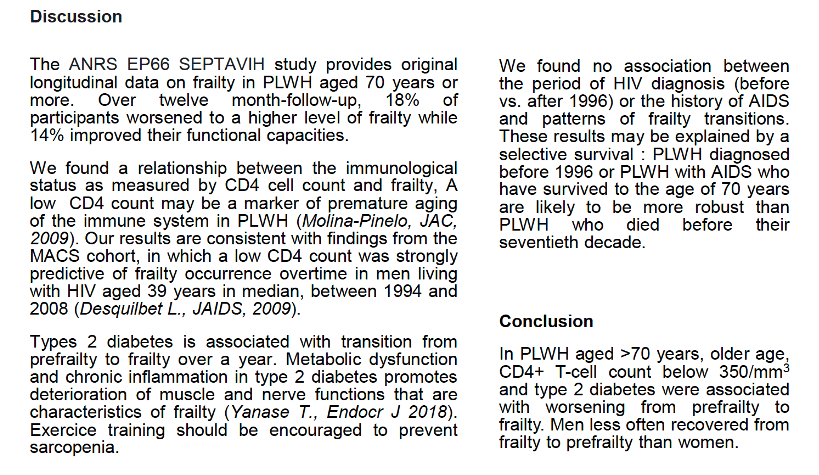
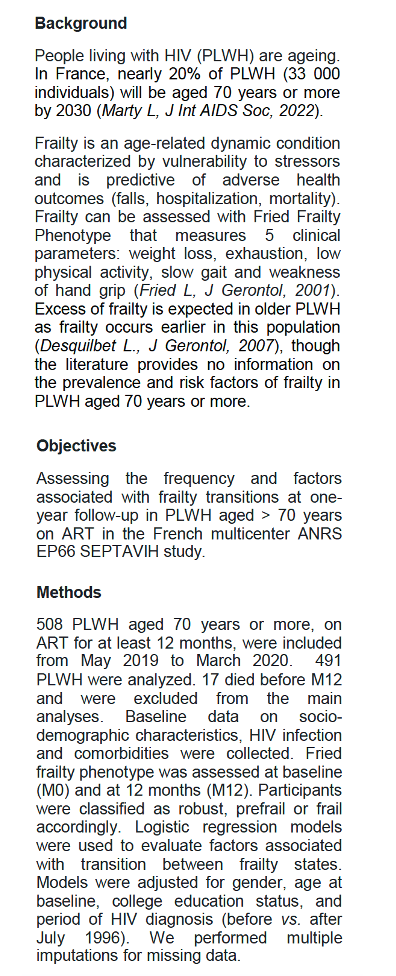
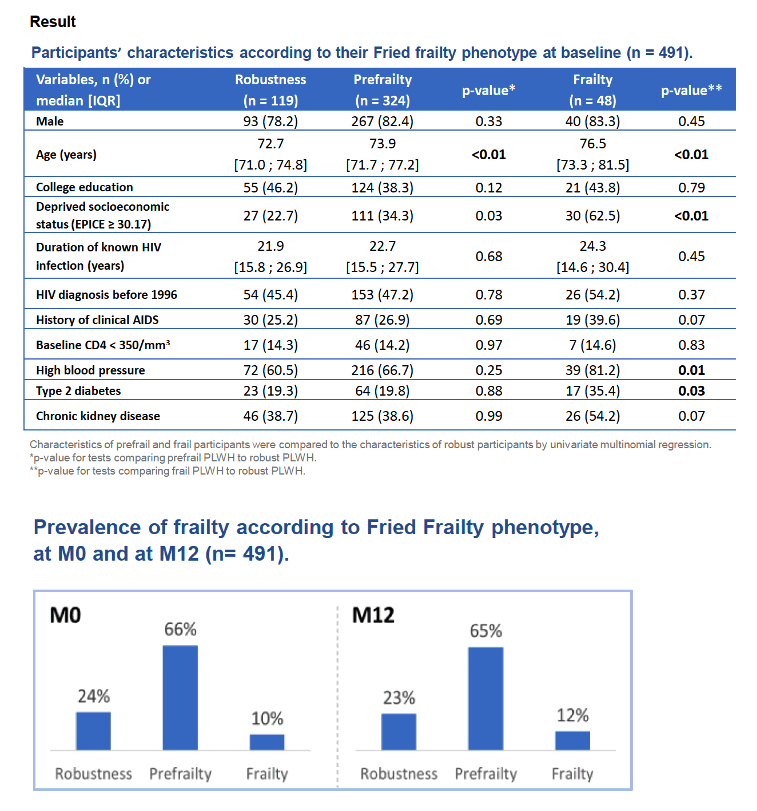
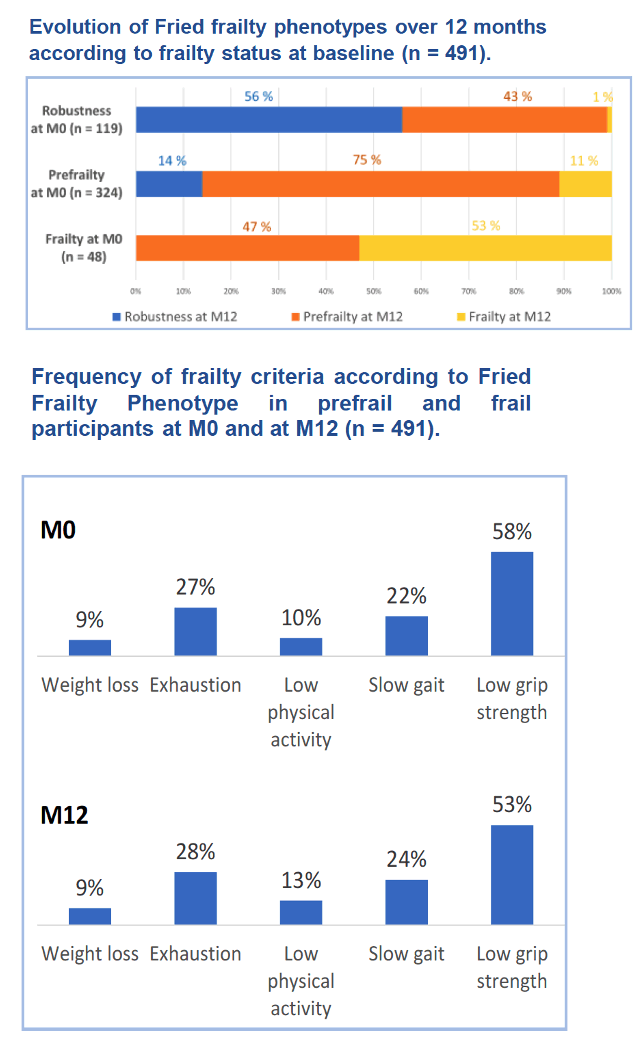
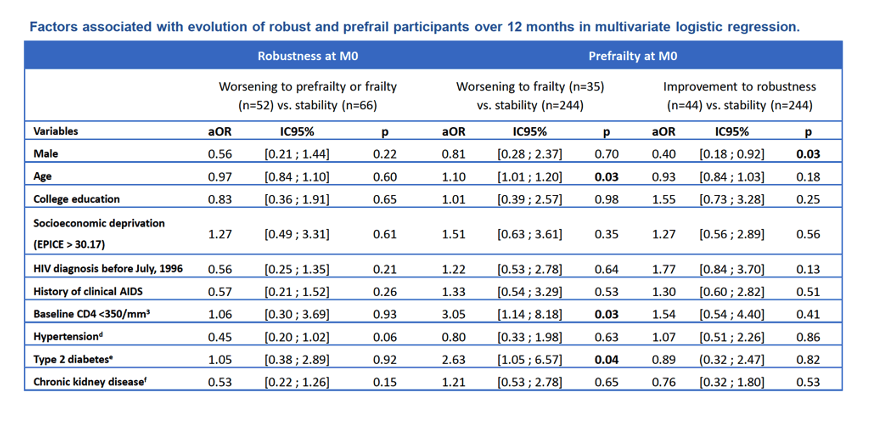
|
| |
|
 |
 |
|
|